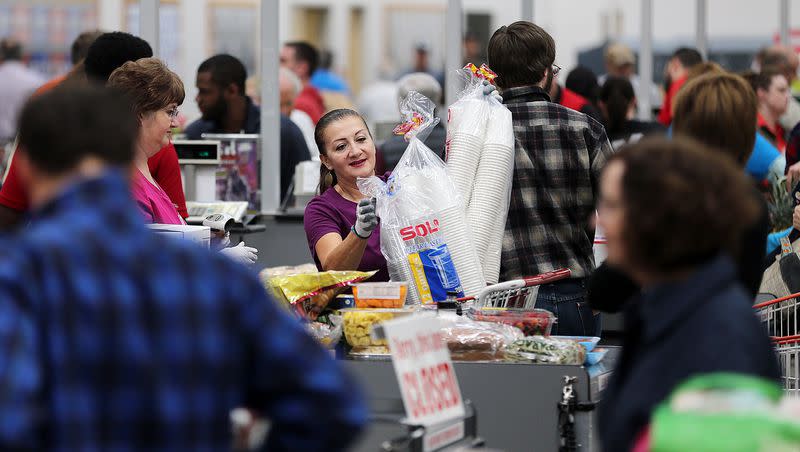Crimes of opportunity? Retailers rethink self-checkouts as inventory losses soar

Self-checkout systems used by store operators hoping to cut overhead costs may actually be leading to opposite outcomes as shoplifting rates more than double when consumers do-it-themselves, a dynamic helping fuel skyrocketing losses for U.S. retailers.
Data reported by the National Retail Federation indicates inventory loss due to shrink, a metric that tracks shoplifting as well as internal theft and administrative errors, has ballooned from just over $50 billion annually in 2018 to over $112 billion in 2022.
In 2022, that shrinkage amounted to 1.6%, on average, of U.S. retailers’ total revenues. But a study conducted in 2016 by researchers at the University of Leicester in England found that loss rates connected to self-checkout systems came in at more than double that rate.
While it’s not clear whether or not self-checkouts cultivate the urge to shoplift, researchers told The New York Times that the systems are gateways for consumers to engage in behavior that may be out of their norm.
“Retailers could find themselves accused of making theft so easy that some customers who would normally — and happily — pay are tempted to commit crime, especially when they feel ‘justified’ in doing it,” the researchers said in a statement to the Times.
Related
So, how are shoppers taking advantage of self-checkout systems to walk out with merchandise they didn’t pay for or underpaid for? Here are a few common tactics, according to a report from Findlaw.com senior legal writer, and lawyer, Joseph Fawbush:
The “switcheroo” is perhaps the most common method. This is the name for when consumers switch the barcode on one item for a lesser-priced item. The shoplifter pays for a pack of crayons and walks out with a new television.
The “honest mistake” is another common method. Shoppers hide smaller items inside larger ones, or somehow obscure the item in their cart. Then they walk away without scanning it at all. If questioned, the shopper just says, “Oh, sorry, didn’t see it there.”
The “machine did it” involves covering up the item’s barcode with your hand or passing the item over the scanner upside down. If the hair-trigger weight in the bagging area dings, there’s still a chance an employee will override the sensor without doing a deep dive into the contents of the shoplifter’s bag.
In the face of mounting losses, retailers are rethinking and retooling self-checkout systems including, in some cases, reducing or eliminating the option.
CNN reports that Walmart removed self-checkout machines at some stores in New Mexico earlier this year and ShopRite pulled them at a Delaware store after customer complaints. East coast retailer Wegmans ended a mobile app last year that allowed customers to scan, bag and pay for groceries while they shopped after reporting losses.
On an earnings call earlier this year, Costco chief financial officer Richard Galanti said the retail giant has seen some uptick in losses since installing self-checkout systems in selected stores six years ago but that theft is “thankfully, not a big issue for us.”
“We are asked often recently about our inventory shrinkage results and whether it has dramatically increased in the past year versus historical shrink results,” Galanti said. “The answer is no. In the past several years, our inventory shrink has increased by a couple of basis points, in part, we believe, due to the rollout of self-checkout.
“Over the past year, it has increased by less than 1 basis point more.”
Correction: An earlier version incorrectly identified the National Retail Federation as the National Retail Foundation.

